PRESTO PLANS
Sent straight to your inbox
CLICK HERE TO ACCESS
Sign up to receive 10 ready-to-use ELA resources your students will love!
10 FREE ELA RESOURCES
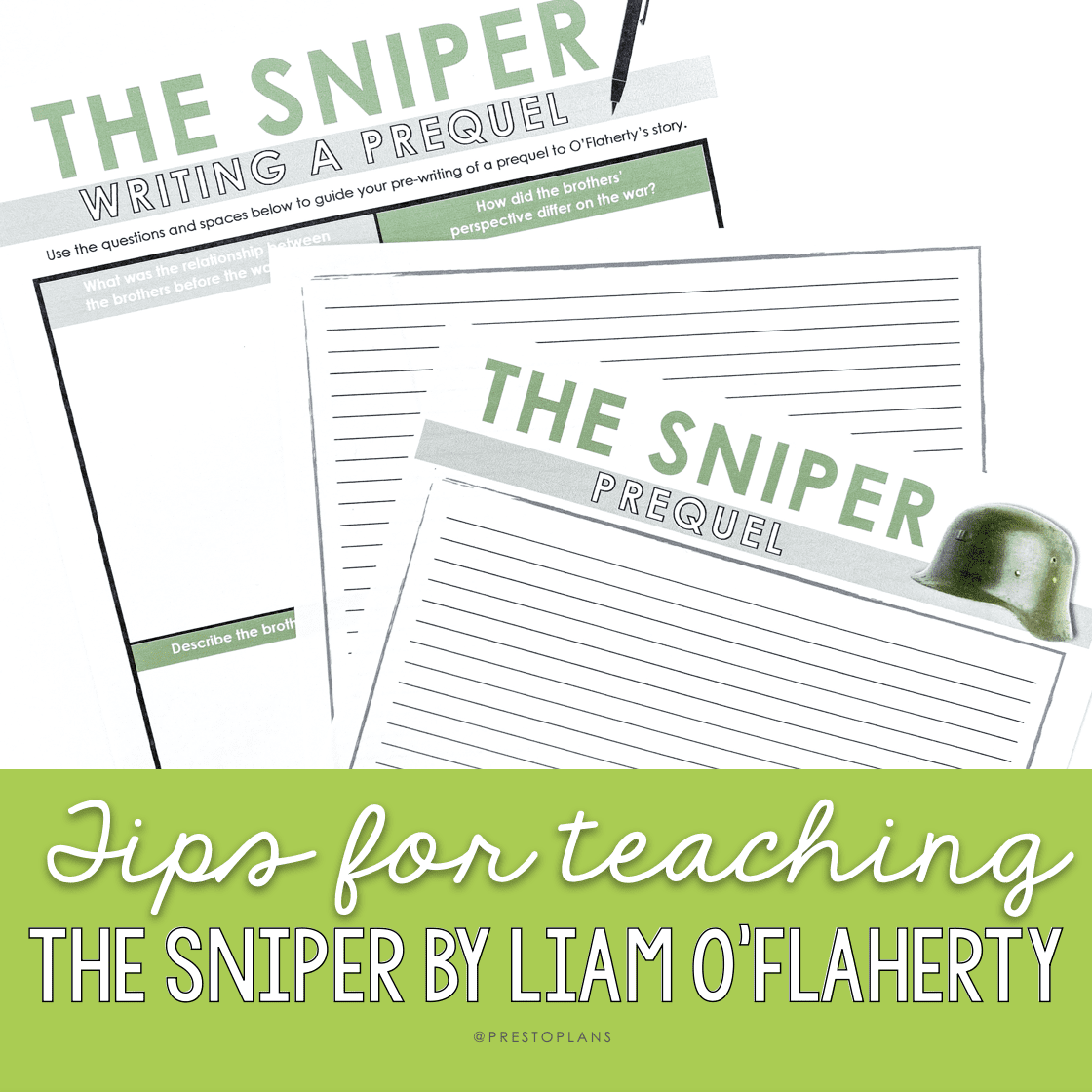
Teaching “The Sniper” by Liam O’Flaherty
In my opinion, short stories are the perfect teaching tool. In just a few pages, students can practice essential ELA skills, including analyzing complex plot elements, making connections, and examining new vocabulary words in context.
If you’re looking for a short, intense short story to really hook your middle or high school students, you might be interested in teaching “The Sniper” by Liam O’Flaherty. Set against the backdrop of the Irish Civil War, this short story provides opportunities for students to explore historical context, practice and apply new vocabulary, and dive deeper into literary analysis. Here’s how I recommend making the most of teaching “The Sniper” with your ELA students.
Build Background Information
I always begin teaching a short story like “The Sniper” by providing details about the author. One of the most prominent political writers of his time, Liam O’Flaherty served his country in the First World War. Following his return to Ireland in the early 1920s, he participated in the 1922 Battle of Dublin, a week of street battles that marked the beginning of the Irish Civil War. While “The Sniper” is a work of fiction, it borrows heavily from his personal experiences.
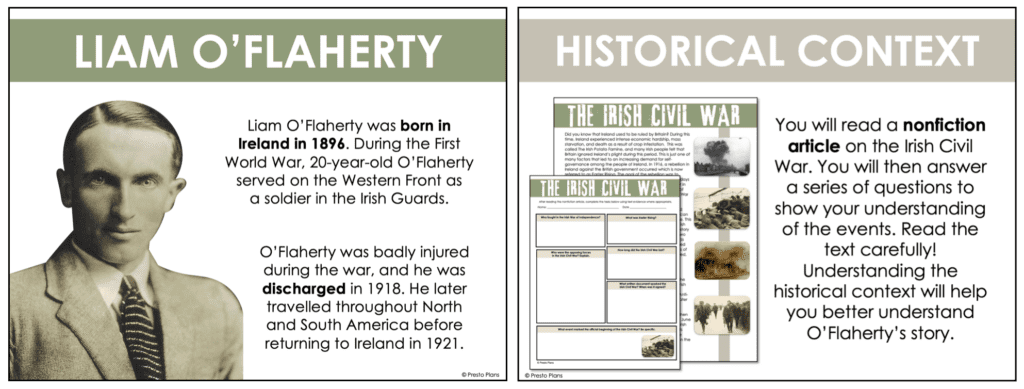
Because “The Sniper” is set during the Irish Civil War, it’s likely that your students will be unfamiliar with its historical context. This is a powerful opportunity to infuse your short story lesson with a bit of nonfiction. I like to start by providing students with an article to give students a bit of background information. As they learn more about the Irish Potato Famine, the opposing forces in the Irish Revolution, and the events of the Easter Rising, they will be better able to understand the historical events that set the stage for “The Sniper.”
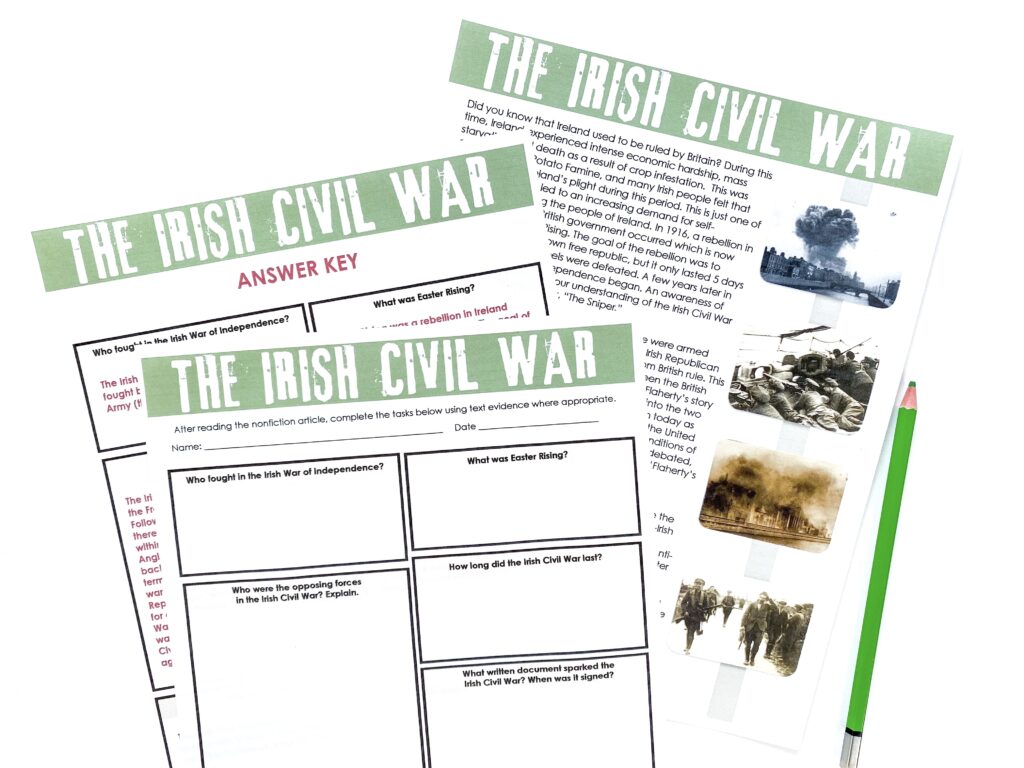
Pre-Reading Discussion
From here, I like to move into a pre-reading discussion that activates students’ prior knowledge and encourages them to make connections. When teaching “The Sniper,” some of the questions I like to focus on include:
- Do you think people should take risks that have potentially dangerous consequences?
- How do you perform under pressure?
- Is war ever justified?
Pre-reading questions can be used to facilitate a whole-class discussion, or you might want your students to chat about their responses in pairs or small groups before sharing with the class. Alternatively, students could independently respond to the questions in a visual journal, using a combination of words or images to explore their understanding.
Reading the story
One important component of a short story lesson on “The Sniper” is ensuring students have an understanding of important vocabulary terms before they read. “Parapet” is a word most students are unfamiliar with, but is essential to support readers as they visualize the position of the title character. To help middle or high school students understand the meaning of “parapet,” I like to quickly display a visual of this low, protective wall on the roof of a building.
Now, it’s time to read! Depending on the needs of your class, you might prefer that students read “The Sniper” independently. Alternatively, you could read to your class, or even play a recording of the story as the students follow along with the text.
Post-Reading Discussion
Once everyone has had the chance to read the story, a post-reading discussion can help students unpack the events of “The Sniper” and begin examining the story in a broader context. I prefer to give students some processing time to consider their answers to each question (and maybe even jot down some initial reflections) before leading a whole-class discussion. This can sometimes help them collect their thoughts, and make them more willing to share with the larger group.
Vocabulary Activity
One thing I really like about teaching “The Sniper” is the rich and unique vocabulary it contains. Students can sometimes find traditional vocabulary work to be a bit dry (so do I!). With this in mind, I like to use a slightly different twist on a vocabulary activity – Mystery Word!
To share this activity with students, prepare the print-and-go task cards by cutting them out and stacking them into two piles – one for vocabulary terms from the story, and one for their corresponding definitions. Working alone, in pairs, or in small groups, students must match each term quoted from “The Sniper” with its correct definition. When all the quotes and definitions are matched in the correct order, a mystery word will be revealed!
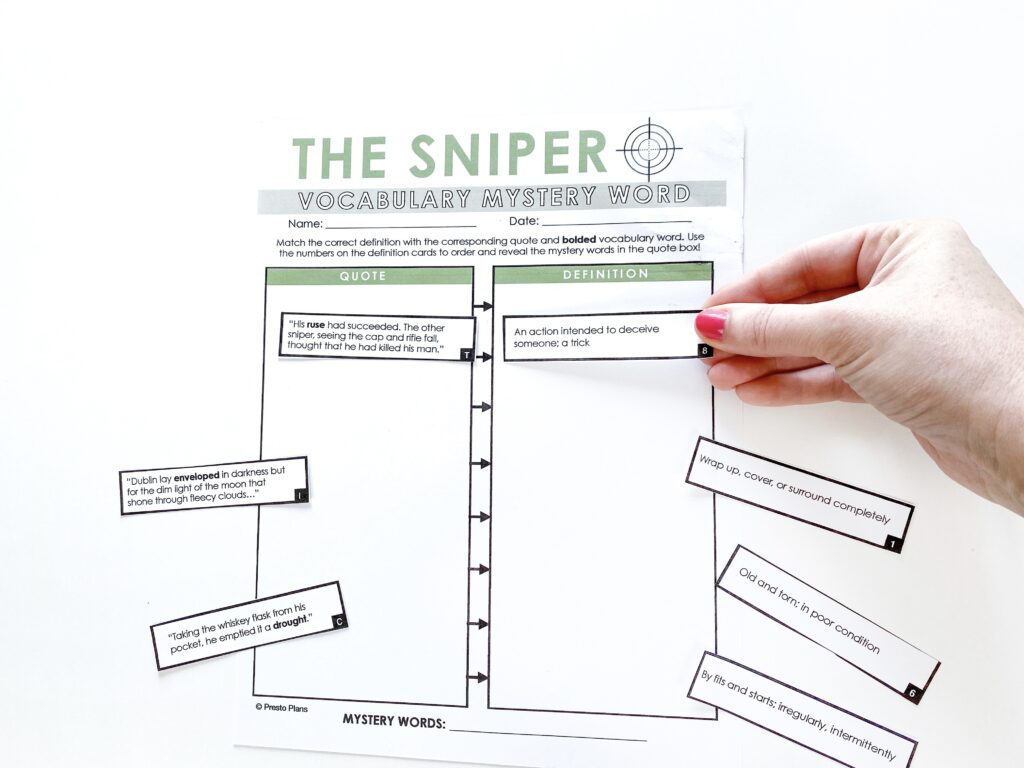
Reading Questions
Guided analysis activities can help students dive more deeply into any text. When teaching “The Sniper,” encourage your students to analyze elements of the plot, as well as writers’ craft. For example, you might ask them to identify and explain examples of foreshadowing or situational irony in the story. For this activity, students may wish to refer back to their notes from the post-reading discussion, or briefly discuss their ideas with a peer before they complete their responses.
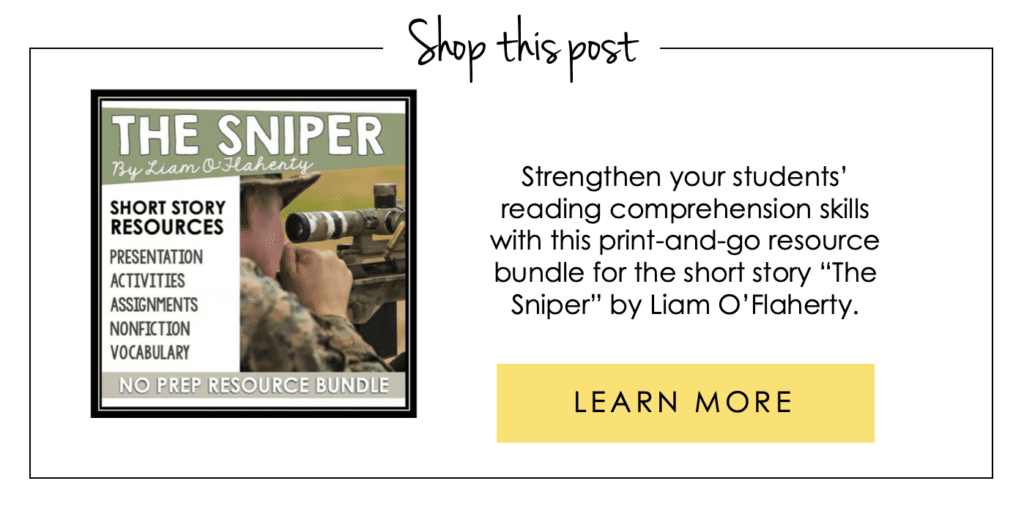
Army Report
Once students have had the chance to explore the text in more depth and detail, it’s time for them to get creative! One activity you can try when teaching “The Sniper” is to have students create an Army Report from the perspective of the sniper himself. Using a provided graphic organizer, students must draw on the story to provide a description of the location where the altercation took place, as well as a summary of events, casualties, and personal injuries. Encourage students to be as creative as they want!
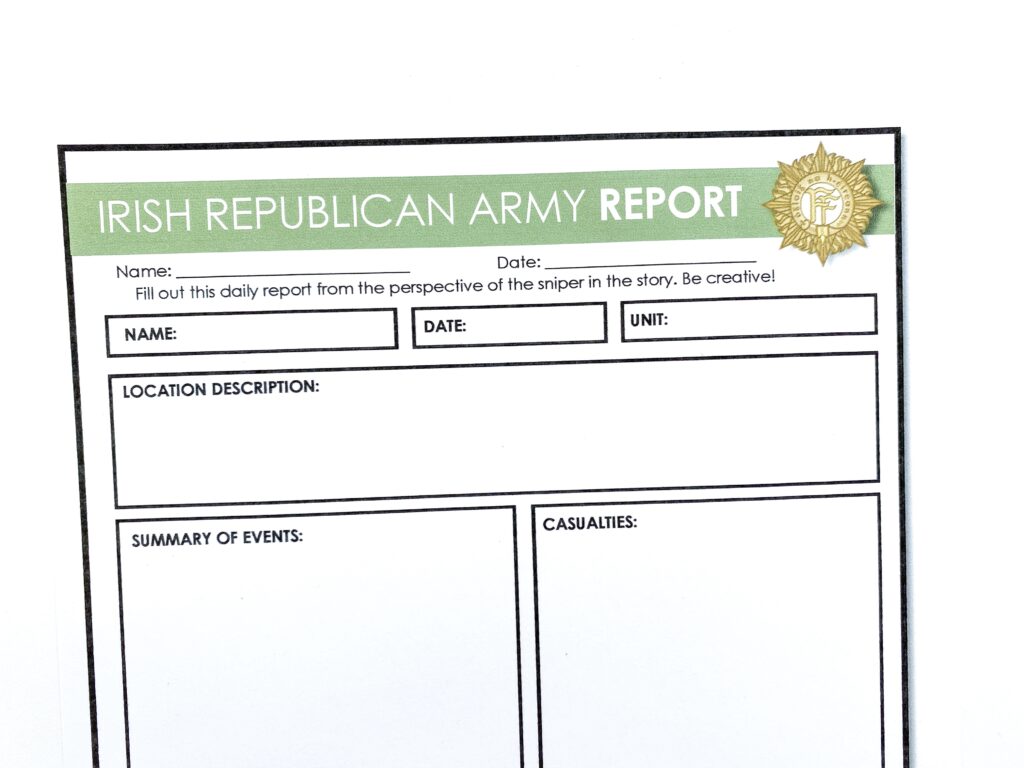
Writing a Prequel
For a longer creative activity to support teaching “The Sniper,” you might like to have students imagine a prequel to this short story. To begin, encourage them to imagine the relationship between the sniper and his brother before the war began. Guided by provided questions and a graphic organizer, students can work through the planning and pre-writing process before they write a draft of their prequel.
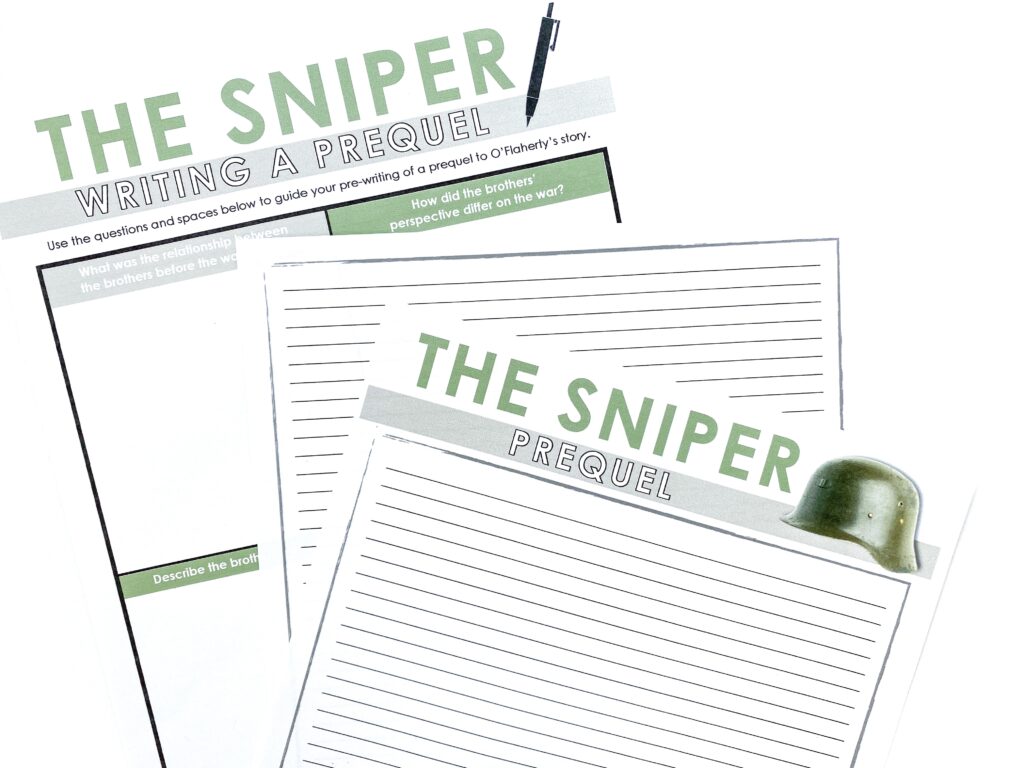
Letter Writing
An alternative creative writing assignment for teaching “The Sniper” is a letter-writing task. In this activity, students must take on the perspective of the sniper and draft a letter to his family, describing the incident from the story.
Using a similar graphic organizer to the Writing a Prequel task, students must consider how the events of the story could have a long-term impact on both the sniper and his family. They may wish to consider whether the sniper feels remorse for his actions, whether the events of the story have changed his perspective on the war, and what the overall tone of such a letter would be.
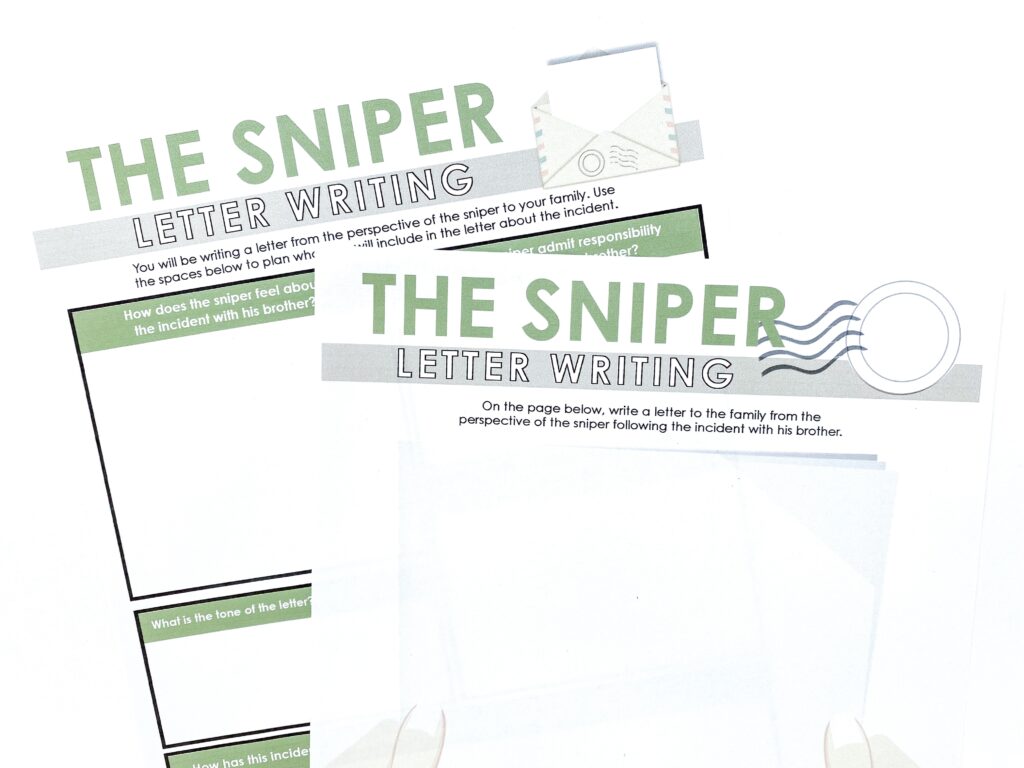
Figurative Language Activity
One thing that really sets “The Sniper” apart is O’Flaherty’s use of figurative language throughout the story. In this quick task, students must review a series of quotes from “The Sniper,” and identify whether each is an example of metaphor, simile, onomatopoeia, personification, or hyperbole. This figurative language activity is a great way for students to quickly review these terms, and put their knowledge into practice!
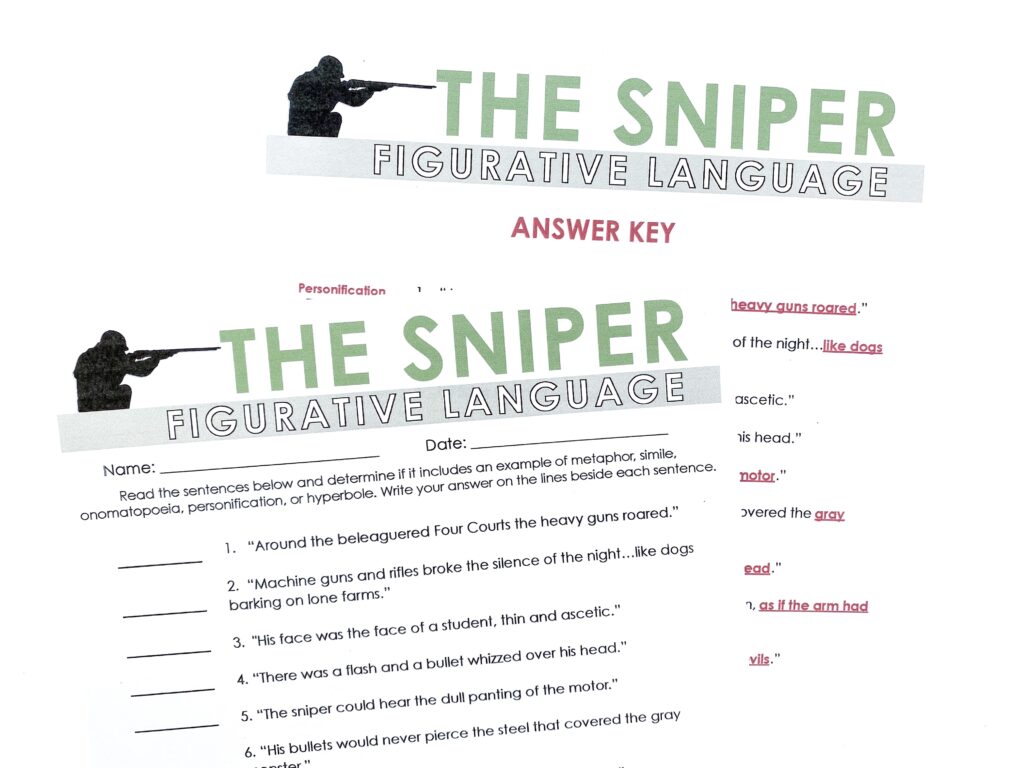
Plot Diagram Activity
If you’re looking for a way to reinforce students’ understanding of the plot when teaching “The Sniper,” I have a hands-on twist on the traditional “plot diagram.” To prepare for this learning task, divide students into pairs or small groups. Provide each group with a plot diagram template, as well as twelve numbered cards containing sentences describing events from the story.
But there’s a catch! As students examine the cards for examples of exposition, rising action, climax, falling action and resolution, they will find some information “fits” better than others – in fact, only six out of the twelve provided sentences are the “best” representation of each element of the story’s plot. When the sentences are correctly identified and placed in the right order, a mystery code is revealed!
Tip: I like to print my plot diagram on tabloid-size paper if it is available. This makes the page double the size of standard printer paper, and is easier for students to work with!
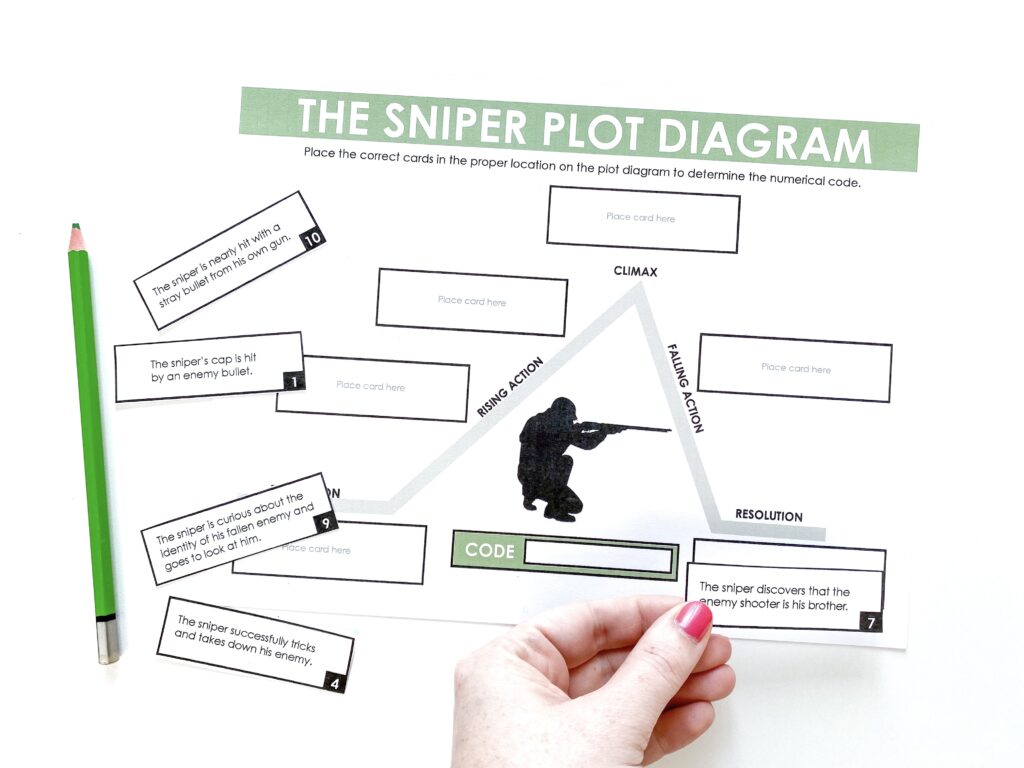
Analysis Notes
To reinforce the literary concepts illustrated in “The Sniper,” I like to spend some time analyzing various elements of the story. Guided by comprehensive instructional slides, students can explore examples of Liam O’Flaherty’s succinct and suspenseful writing style. This is also a useful opportunity to dive deeper into how setting, theme, and tone contribute to the narrative as a whole.
There you go! I hope these ideas give you a fresh perspective on teaching “The Sniper” in middle or high school ELA!

Looking for more ideas for teaching short stories in middle or high school ELA? Check out my posts on teaching “The Most Dangerous Game” by Richard Connell, or “The Chaser” by John Collier.
Search the blog for what you are teaching
GIVEAWAYS
sent straight to your inbox!
share this post